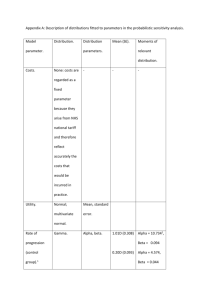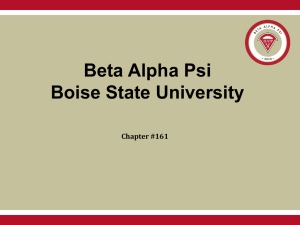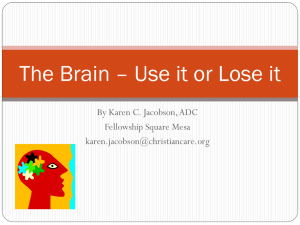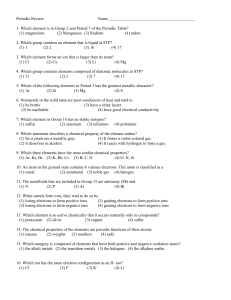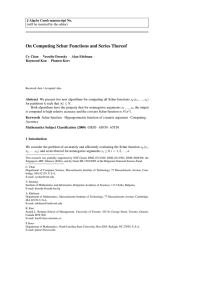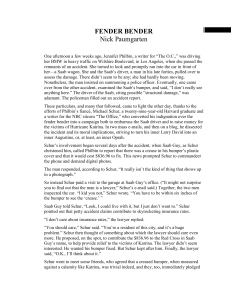la_gegs
advertisement
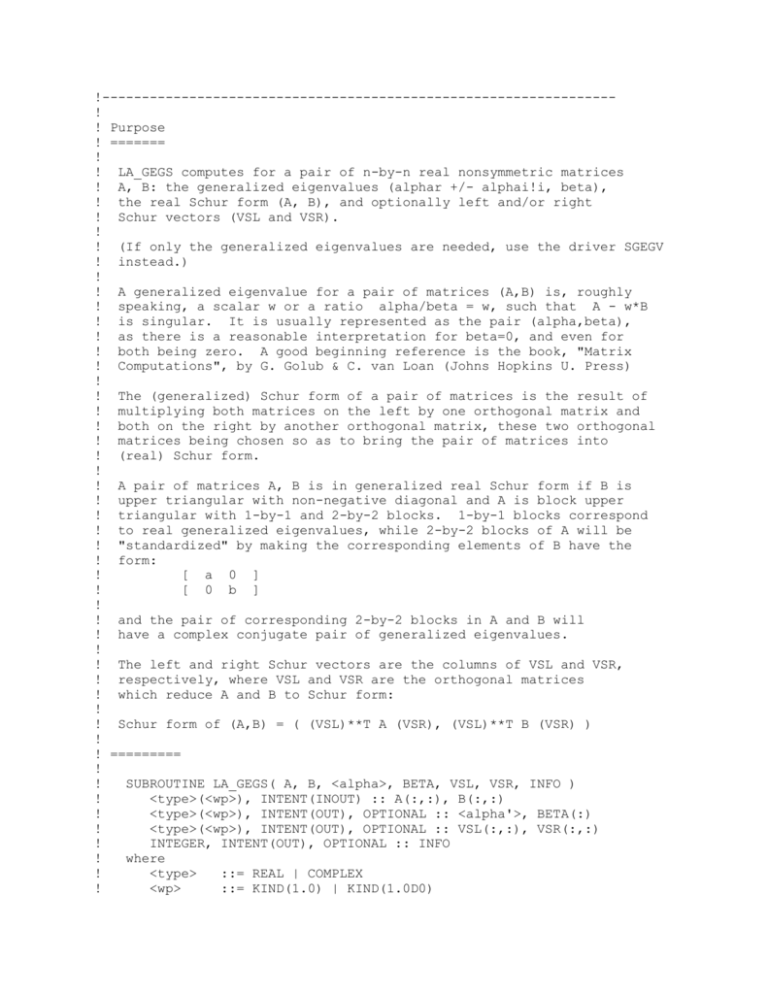
!----------------------------------------------------------------! ! Purpose ! ======= ! ! LA_GEGS computes for a pair of n-by-n real nonsymmetric matrices ! A, B: the generalized eigenvalues (alphar +/- alphai!i, beta), ! the real Schur form (A, B), and optionally left and/or right ! Schur vectors (VSL and VSR). ! ! (If only the generalized eigenvalues are needed, use the driver SGEGV ! instead.) ! ! A generalized eigenvalue for a pair of matrices (A,B) is, roughly ! speaking, a scalar w or a ratio alpha/beta = w, such that A - w*B ! is singular. It is usually represented as the pair (alpha,beta), ! as there is a reasonable interpretation for beta=0, and even for ! both being zero. A good beginning reference is the book, "Matrix ! Computations", by G. Golub & C. van Loan (Johns Hopkins U. Press) ! ! The (generalized) Schur form of a pair of matrices is the result of ! multiplying both matrices on the left by one orthogonal matrix and ! both on the right by another orthogonal matrix, these two orthogonal ! matrices being chosen so as to bring the pair of matrices into ! (real) Schur form. ! ! A pair of matrices A, B is in generalized real Schur form if B is ! upper triangular with non-negative diagonal and A is block upper ! triangular with 1-by-1 and 2-by-2 blocks. 1-by-1 blocks correspond ! to real generalized eigenvalues, while 2-by-2 blocks of A will be ! "standardized" by making the corresponding elements of B have the ! form: ! [ a 0 ] ! [ 0 b ] ! ! and the pair of corresponding 2-by-2 blocks in A and B will ! have a complex conjugate pair of generalized eigenvalues. ! ! The left and right Schur vectors are the columns of VSL and VSR, ! respectively, where VSL and VSR are the orthogonal matrices ! which reduce A and B to Schur form: ! ! Schur form of (A,B) = ( (VSL)**T A (VSR), (VSL)**T B (VSR) ) ! ! ========= ! ! SUBROUTINE LA_GEGS( A, B, <alpha>, BETA, VSL, VSR, INFO ) ! <type>(<wp>), INTENT(INOUT) :: A(:,:), B(:,:) ! <type>(<wp>), INTENT(OUT), OPTIONAL :: <alpha'>, BETA(:) ! <type>(<wp>), INTENT(OUT), OPTIONAL :: VSL(:,:), VSR(:,:) ! INTEGER, INTENT(OUT), OPTIONAL :: INFO ! where ! <type> ::= REAL | COMPLEX ! <wp> ::= KIND(1.0) | KIND(1.0D0) ! ! ! ! ! ! ! ! ! ! ! ! ! ! ! ! ! ! ! ! ! ! ! ! ! ! ! ! ! ! ! ! ! ! ! ! ! ! ! ! ! ! ! ! ! ! ! ! ! ! ! ! ! ! <alpha> ::= ALPHAR, ALPHAI | ALPHA <alpha'> ::= ALPHAR(:), ALPHAI(:) | ALPHA(:) Arguments ========= A (input/output) REAL / COMPLEX array, shape (:,:), SIZE(A,1) == SIZE(A,2) == n. On entry, the first of the pair of matrices whose generalized eigenvalues and (optionally) Schur vectors are to be computed. On exit, the generalized Schur form of A. Note: to avoid overflow, the Frobenius norm of the matrix A should be less than the overflow threshold. B (input/output) REAL / COMPLEX array, shape (:,:), SIZE(rBA,1) == SIZE(rBA,2) == n. On entry, the second of the pair of matrices whose generalized eigenvalues and (optionally) Schur vectors are to be computed. On exit, the generalized Schur form of B. Note: to avoid overflow, the Frobenius norm of the matrix B should be less than the overflow threshold. ALPHAR ALPHAI ALPHA Only for the real case. Optional (output) REAL array, shape (:), SIZE(ALPHA') == n. ALPHA ::= ALPHAR | ALPHAI Only for the complex case. Optional (output) COMPLEX array, shape (:), SIZE(ALPHAI) == n. BETA Optional (output) REAL / COMPLEX array, shape (:), SIZE(BETA) == n. On exit, (ALPHAR(j) + ALPHAI(j)*i)/BETA(j), j=1,...,n, will be the generalized eigenvalues. ALPHAR(j) + ALPHAI(j)*i, j=1,...,n and BETA(j),j=1,...,n are the diagonals of the complex Schur form (A,B) that would result if the 2-by-2 diagonal blocks of the real Schur form of (A,B) were further reduced to triangular form using 2-by-2 complex unitary transformations. If ALPHAI(j) is zero, then the j-th eigenvalue is real; if positive, then the j-th and (j+1)-st eigenvalues are a complex conjugate pair, with ALPHAI(j+1) negative. Note: the quotients ALPHAR(j)/BETA(j) and ALPHAI(j)/BETA(j) may easily over- or underflow, and BETA(j) may even be zero. Thus, the user should avoid naively computing the ratio alpha/beta. However, ALPHAR and ALPHAI will be always less than and usually comparable with norm(A) in magnitude, and BETA always less than and usually comparable with norm(B). VSL Optional (output) REAL / COMPLEX array, shape (:,:), SIZE(VSL,1) == SIZE(VSL,2) == n. VSL will contain the left Schur vectors. (See "Purpose", above.) VSR Optional (output) REAL / COMPLEX array, shape (:,:), SIZE(VSL,1) == SIZE(VSL,2) == n. VSR will contain the right Schur vectors. (See "Purpose", above.) ! ! INFO (output) INTEGER ! = 0: successful exit ! < 0: if INFO = -i, the i-th argument had an illegal value. ! = 1,...,n: ! The QZ iteration failed. (A,B) are not in Schur ! form, but ALPHAR(j), ALPHAI(j), and BETA(j) should ! be correct for j=INFO+1,...,n. ! > n: errors that usually indicate LAPACK problems: ! =n+1: error return from LA_GGBAL ! =n+2: error return from LA_GEQRF ! =n+3: error return from LA_ORMQR ! =n+4: error return from LA_ORGQR ! =n+5: error return from LA_GGHRD ! =n+6: error return from LA_HGEQZ (other than failed ! iteration) ! =n+7: error return from LA_GGBAK (computing VSL) ! =n+8: error return from LA_GGBAK (computing VSR) ! =n+9: error return from LA_LASCL (various places) ! If INFO is not present and an error occurs, then the program is ! terminated with an error message. !-------------------------------------------------------------


